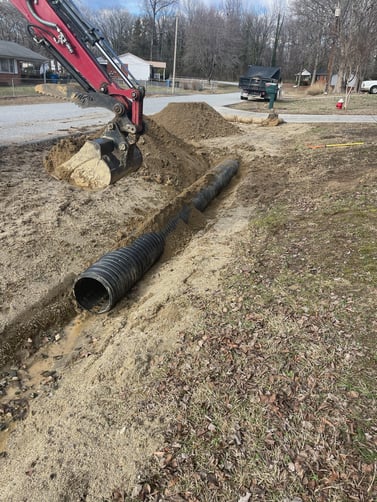Discover the essential factors to keep in mind when selecting demolition contractors for your...
5 Common Mistakes to Avoid When Installing Culvert Pipes
Learn about the most common mistakes to steer clear of during culvert pipe installation to ensure a successful project.
Improper Sizing of Culvert Pipes
One common mistake to avoid when installing culvert pipes is improper sizing. It is crucial to select the correct size of culvert pipe based on the anticipated flow and the area it needs to cover. Installing too small of a pipe can result in water overflow and potential damage to the surrounding area. On the other hand, too large of a pipe can lead to inefficient flow and unnecessary expenses. It is essential to consult with experts or refer to relevant guidelines to determine the appropriate size for the culvert pipes in your project. In many cases, state and local codes stipulate the proper culvert pipe size in code. Knowing these details and pulling the appropriate permits helps keep your project on the path to success rather than facing trouble with the authorities.
Incorrect Slope Alignment
Another common mistake is incorrect slope alignment. The slope of the culvert pipe should be appropriately aligned to ensure efficient water flow. If the slope is too steep, it can lead to fast-moving water that may erode the surrounding soil and cause instability. Conversely, if the slope is too gentle, water may accumulate and result in flooding. It is essential to accurately calculate and set the slope alignment during installation to prevent such issues. Often, we see the improper burial depth of the culvert pipe. Burying the pipe too shallow results in a lack of the appropriate material on top of it, while burying it too deep results in water being captured in the pipe. Consulting with professionals or following established standards can help ensure slope alignment.
Neglecting Proper Backfilling Techniques
Neglecting proper backfilling techniques is another mistake to avoid. Backfilling refers to filling the space around the culvert pipe after installation. It is essential to use the appropriate materials and methods to ensure stability and prevent pipe movement or damage. Improper backfilling can result in pipe misalignment, deformation, or even collapse. It is crucial to follow recommended backfilling techniques, which may include compacting the backfill material in layers and using suitable compaction equipment. This will help maintain the integrity of the culvert pipes and ensure their long-term functionality.
 Failure to Account for Soil Conditions
Failure to Account for Soil Conditions
Failure to account for soil conditions is a common mistake that should be avoided. The soil type and properties can significantly impact the performance and durability of the culvert pipes. Different soil compositions have varying load-bearing capacities and drainage characteristics. Ignoring soil conditions can lead to pipe failure, settlement, or other structural issues. Conducting a thorough soil analysis and considering factors such as soil type, compaction, and water content when designing and installing culvert pipes is essential. This will help ensure the pipes can withstand the soil conditions and perform effectively.
Lack of Regular Maintenance
Lastly, a common mistake is the lack of regular maintenance. Culvert pipes require periodic inspections and maintenance to identify and address issues promptly. Neglecting regular maintenance can result in clogged pipes, blockages, or deterioration, hindering water flow and leading to costly repairs. Establishing a maintenance schedule and performing routine checks is vital to ensure the pipes are clear of debris, sediment, or vegetation. Regular maintenance will help extend the lifespan of the culvert pipes and prevent potential problems.

